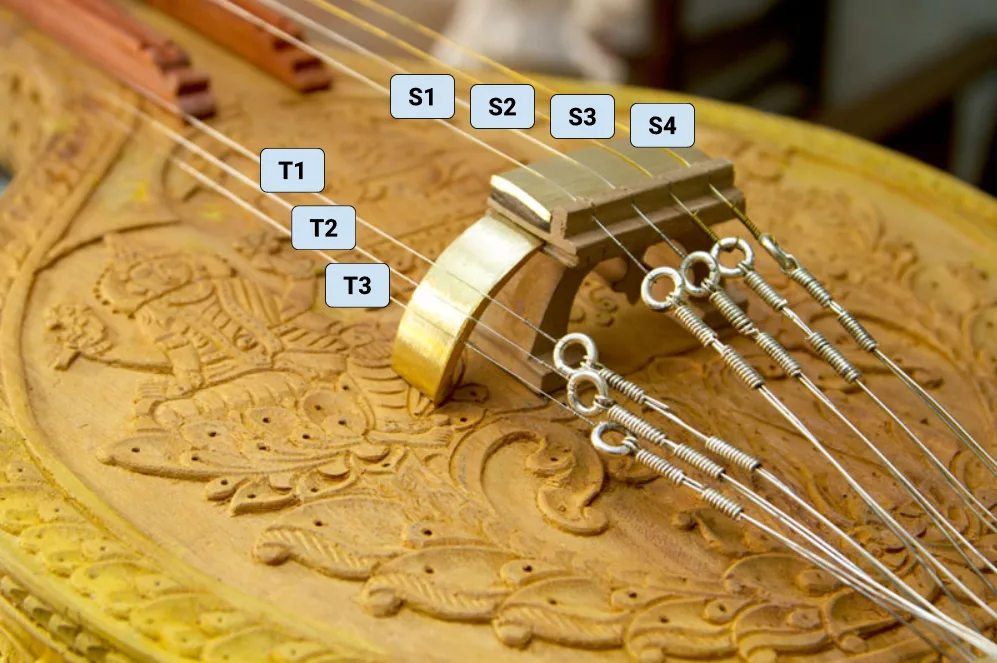How to Tune a Veena
Step-by-Step Guide
The Saraswati Veena is one of the most revered instruments in Indian classical music. A properly tuned veena ensures that every note resonates in harmony with the shruti and brings out the full depth of Carnatic music. This guide explains the tuning process using the VeenaTuner tool and the standard string names.
Understanding the Veena Strings
A Carnatic veena has 7 strings in total:
- Main (Melody) Strings – 4 strings along the fretboard:
- S1 - Sārini Sa
- S2 - Panchama
- S3 - Mandra Sa
- S4 - Anumandra
- Drone / Tāla Strings – 3 side strings:
- T1 - Srishti Tala
- T2 - Sthithi Tala
- T3 - Laya Tala
Step-by-Step Tuning Process
-
Set the Base Note (Sa)
Pick a comfortable Sa for your voice and instrument. Many players use E3 as the base, but you may choose slightly lower or higher depending on string tension. -
Tune the Main and the Drone Strings
Reference Table (S1 = E3)
String Role Target Note S1 Sa E3 S2 Pa (↓) B2 S3 Sa (↓) E2 S4 Pa (↓↓) B1 T1 Sa E3 (=S1) T2 Pa B3 T3 Sa (↑) E4 
-
Adjust with Care
If the note is too low, tighten the peg gently. If too high, loosen it slowly. Always make small adjustments to avoid string breakage.
Tips for Best Results
- Tune in a quiet environment for accuracy.
- Pluck clearly and let the note settle before adjusting.
- Re-tune before each practice or concert as weather and use can shift pitch.
- Develop your ear alongside using a tuner - over time, you’ll be able to fine-tune by sound alone.
Conclusion
Tuning the veena may seem tricky at first, but with practice it becomes second nature. A well-tuned veena enriches your music and keeps you in perfect shruti.
